How to Grow Okra: Complete Step-by-Step Guide

Written by
Benjamin Miller
Reviewed by
Prof. Charles Hartman, Ph.D.Okra needs sunlight and warm soil (65°+) to grow
Choose a spineless variety like Clemson Spineless for easy harvest
Water plants with 1 inch each week, don't wet leaves and put the plants at risk of disease
Harvest the pods at 2 to 3 inches for tenderness
Use black plastic mulch to warm soil if you are in a cold climate
Rotate the crops each year and spade the plants 24-36 inches apart
Article Navigation
How to grow okra begins by realizing how it loves the heat and how versatile it can be. This Southern staple grows well above 70°F and can be used in soups, stir-fry, or pickled in jars. Its flowers that resemble hibiscus blooms will be a gorgeous addition to your vegetable patch while attracting pollinators.
Okra has a lot of nutrition, with levels of vitamin C comparable to oranges and fiber that will help with digestion. It also contains mucilage (which is often confused as slimy) that serves as a natural thickener that can be used in dishes, like gumbo. Although okra is a drought-tolerant plant, you will get even more yield by providing consistent care to the plants.
Success relies on checking daily for tender pods that will not grow past 4 inches long. I have lost whole batches due to overgrown, woody okra, but did what I was supposed to do and did not harvest for two days. I suggest setting a cell phone alarm for every morning for cutting okra pods at the stem base with shears, not your fingers. The spines will irritate your skin, so be careful in harvesting.
Although okra is remarkably tolerant of extreme heat, the soil quality cannot be ignored. If your soil is clay-heavy, amend it with compost to avoid water pooling. In my garden in Texas, my raised beds utilizing black plastic mulch enabled plants to grow faster than traditional plots, as soil inside raised beds warmed up two weeks earlier than soil in traditional plots.
Planting Okra Correctly
When planting okra it is important to pay attention to the soil temperature. Seeds will not grow under 65°F, so be sure to use a soil thermometer to check the temperature of the soil. I have also saved some planting and harvest time by using black plastic mulch for two weeks before I wanted to plant, which would trap the heat and, in a sense, keep the seeds from knowing that the soil temperature was cold.
Depth is more important than you'd think. In clay soils, plant seeds 1 inch deep to avoid rot, whereas in sandy soils, you should bury them 1.5 inches for moisture retention. My neighbor in Alabama swears by using a paint stick to mark all the planting holes so they are consistent.
Space plants 18 inches apart in humid areas, such as Florida. Airflow is indispensable to prevent fungal nightmares. When watering in arid desert gardens, such as Arizona backyards, cluster plants 12 inches apart to form shade pockets that protect one another. This is much like okra's native climate in Africa, where plants grow in protective groups.
The weight of frost cloth is crucial to survival. If planting earlier than recommended, use a 0.5 oz/sq yd fabric. You'll receive 85% light through the fabric while remaining frostproof. You'll have to reuse old curtains in a pinch, while it generally works to make the seeds germinate sooner, proper frost cloth will stop leggy seedlings from reaching weak sunlight.
Don't dismiss the nighttime dips. Even though I live in Zone 8, I have used milk jugs, cut in half, over seedlings. It gives them mini-greenhouses that provide even warmth. I try to take off the covers by mid-morning so they don't overheat the young plants.
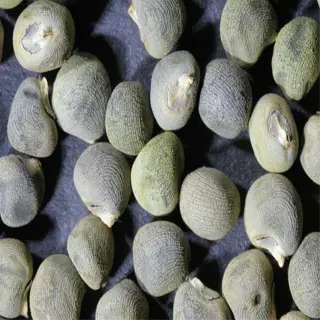
Okra Seeds
- Hybrid varieties often show improved germination under optimal conditions
- Optimal size: 0.3-0.4 inches (7-10 mm) diameter for consistent sprouting
- Pre-soaking enhances seed viability and sprout consistency
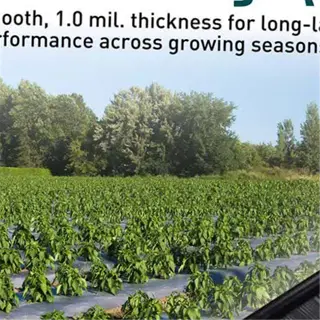
Black Plastic Mulch
- Increases soil temperature by 5-7°F (3-4°C) during early spring planting
- Significantly reduces weed growth through light blockage
- Durable material lasts multiple growing seasons

Soil Thermometer
- Measures exact soil temperature at 2-inch (5 cm) depth
- Digital models provide readings within ±1°F (0.5°C) accuracy
- Essential for verifying 65°F (18°C) minimum planting temperature

Drip Irrigation Kit
- Delivers 0.5 gallons (1.9 liters) per hour directly to roots
- Helps prevent fungal diseases by keeping foliage dry
- Customizable emitters spaced 12 inches (30 cm) apart

Frost Protection Blanket
- 0.5 oz/sq yd (17 g/m²) fabric raises temperature by 4°F (2°C)
- Allows sunlight transmission while protecting seedlings
- Reusable for multiple seasons with proper care
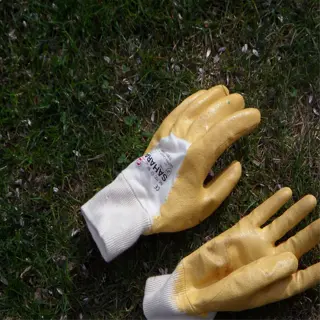
Gardening Gloves
- Puncture-resistant material protects from okra's microscopic spines
- Reinforced fingertips for handling tools and seeds
- Machine washable up to 104°F (40°C)
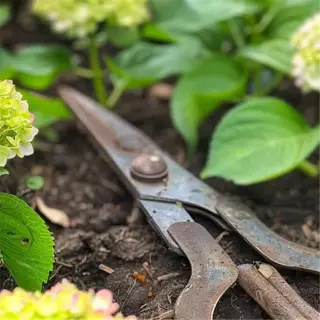
Pruning Shears
- Sharpened blades make clean cuts on 3/4-inch (19 mm) stems
- Ergonomic handles reduce hand fatigue during harvesting
- Wipe with alcohol after use to prevent disease spread

Compost Bin
- Produces nutrient-rich compost for soil amendment
- Maintains heat levels for organic material breakdown
- Mix brown and green materials for optimal decomposition
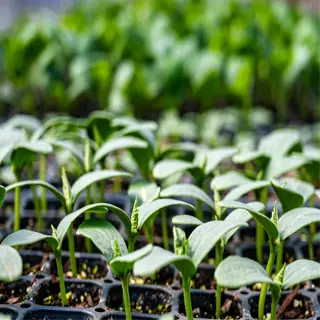
Seedling Trays
- 72-cell trays accommodate 3-inch (7.6 cm) root development
- Drainage holes prevent waterlogging of young plants
- Reusable after sterilization with vinegar solution

pH Testing Kit
- Measures acidity range from 5.0-8.0 pH units
- Color-coded results appear within 60 seconds
- Includes multiple tests for soil sample analysis
Choosing the Right Okra Variety
By choosing hybrid okra varieties, such as Clemson Spineless, you can expect harvest in about 50 days, while heirloom okra varieties, like Jing Orange, take about 70 days. I've found that hybrids perform well under the severe unpredictability of the Midwest summer, whereas heirlooms excel in the humid Southern climate where disease resistance is less of a concern.
Pair the types you selected with their appropriate sweat level by your region. The distinct red pods of Burgundy adapt to Georgia's humidity but will wilt in dry heat, like Arizona. Desert gardens can take advantage of Emerald, which has thick lemon-colored leaves with excellent moisture retention. I lost my earlier Arizona plant while trying out the pretty colors before realizing I needed to use drought-tolerant types.
Dwarf varieties, such as Baby Bubba, remain under 4 feet tall, allowing for container planting on a secluded patio or similar space. Space them 1 foot apart from one another, which is half of the standard 2 feet to 4 feet distance suitable for 8-foot plants. I utilize each stacked planter to accommodate six plants within my limited city urban garden, producing salad pods ready for harvest each week.
Pod hue affects other aspects than Instagram worthiness. While red Burgundy pods can dull in vibrancy when cooked, they look wonderful fresh in salads. The green-ish pods, including Perkins Long Pale, do a much better job of hiding overcooked conditions. For pickled versions, I will often mix the red and green types since the vinegar works to preserve their jewel-toned colors well.
Climate Tolerance
- Heat-loving varieties thrive above 85°F (29°C)
- Cold-tolerant types handle 60°F (15°C) nights
- Humidity-resistant strains prevent fungal issues
Pod Characteristics
- Spineless varieties reduce harvesting discomfort
- 2-4 inch (5-10 cm) pods stay tender longest
- Red varieties add visual interest to dishes
Growth Timeline
- Early varieties mature in 50-55 days
- Main-season types peak at 60-70 days
- Late cultivars require 80+ days
Disease Resistance
- Fusarium wilt resistance crucial in wet climates
- Verticillium tolerance for crop rotation areas
- Mosaic virus protection extends harvest period
Space Requirements
- Dwarf varieties need 12-inch (30 cm) spacing
- Standard types require 24-36 inches (60-90 cm)
- Vertical growth saves garden footprint
Soil Preparation and Fertilization
Organic fertilizers such as compost will provide soil microbes with food while other, synthetic fertilizers could result in salt build-up. I've seen a numbers of worms disappear in the synthetic plots and flourish in plots with aged manure. For seedlings, use fish emulsion (5-5-2 NPK) to increase root development with little nitrogen burn.
Take care to correct the pH of the soil: apply lime (1 lb/10 sq ft) over acidic clay soils, but apply half that rate to sandy soils. My neighbor in Texas used elemental sulfur worked into moist soil to change his alkaline soils a full 0.5 pH points.
Bring your compost in line with the weaknesses of your dirt. For sandy soils in Florida, cow manure the moisture-retentive king of compost is recommended. In heavy clay dirt in the Midwest, I mix in leaf mold to weed out aeration issues. Farmers and gardeners who live on or near the coast also need to avoid seaweed composts due to the salt content and seabreeze-induced salinity issues associated with the coast.
As plants develop, they require different ratios of NPK. Early on, pant growth relies on nitrogen in the soil and requires a nitrogen-heavy mix (10-5-5). When flowering begins, plants need phosphorus, so use a phosphorus-heavy blend (5-10-5) until the flowering is finished. My work with bone meal increased pod counts by doubling them compared to using the standard fertilizer. I believe the bone meal helps with flower retention in drought conditions.
Organic Matter Enrichment
- Compost: 25-30% organic content improves structure
- Aged manure: 1-2 inches (2.5-5 cm) per season
- Biochar enhances soil's water retention capacity
Drainage Improvement
- Raised beds: 8-12 inches (20-30 cm) height
- Sand addition: 30% volume for clay soils
- French drains for waterlogged areas
pH Balancing
- Agricultural lime: 5 lbs/100 sq ft (2.3 kg/9.3 m²) per pH point
- Elemental sulfur: 1 lb/100 sq ft (0.45 kg/9.3 m²) per pH point
- Retest soil 6 weeks after adjustment
Fertilizer Timing
- Pre-planting: Mix slow-release granules into top 6 inches (15 cm)
- Mid-season: Side-dress with 5-10-5 formula at flowering
- Avoid late-season nitrogen to prevent leafy growth
Mulching Techniques
- Organic mulch decomposes at 1 inch (2.5 cm)/month
- Plastic mulch raises soil temp by 5-7°F (3-4°C)
- Replace biodegradable mulches annually
Watering and Pest Management
Seedlings require careful watering; it is vital to keep soil moist, but not soggy. I use a turkey baster to water my young plants, and carefully apply water, so as to not disturb the roots. Mature okra requires at least 1 inch of water weekly. Water thoroughly, soaking roots at dawn to minimize evaporation, and mimic normal dew cycles.
Pests that affect different regions require different defenses. In the South, gardeners contend with the high suspicion of root-knot nematodes tucked away in sandy soils. In the North, growers are tackling Japanese beetles that skeletonize leaves. I can usually identify these invaders by the damage they cause: aphids curl the leaves, stink bugs leave yellow speckles, and corn earworms bore perfect holes in the pod.
Controlling pests organically begins with pre-emptive techniques. Planting marigolds as companions to repel eddoes. If your problem is still active spraying neem oil in the evening should avoid harming the bees. There are chemical alternatives that are more effective and work quickly, but the chemicals kill beneficial insects as well. Use the chemicals, only in extreme situations. Like the spider mites last season almost wiped out my entire 2022 crop.
Coordinate watering with heat waves. Whenever the temperature is above 90°F, I water in the evening around sunset (spraying the drip lines). Whenever the temperature is cooler and below 75°F, I water first thing in the morning. This avoids temperature shock, which is something I've learned since I lost several plants to cold-water stress during an unusual cold snap in Texas.
Watering Techniques
- Morning watering minimizes evaporation
- Avoid overhead irrigation to prevent leaf diseases
- Use soil moisture meters for accuracy
Common Pests
- Aphids: Cluster under leaves, cause yellowing
- Stink bugs: Pierce pods, create blemishes
- Corn earworms: Bore into pods
Natural Predators
- Ladybugs effectively control aphid populations
- Lacewing larvae eat soft-bodied pests
- Praying mantis controls beetles
Fungal Prevention
- Apply copper fungicide at first sign
- Remove infected leaves immediately
- Improve airflow between plants
Monitoring Schedule
- Inspect undersides of leaves weekly
- Use yellow sticky traps for flying insects
- Keep garden journal for patterns
Harvesting Okra Pods
To maintain productive okra plants, harvest the pods each day. When possible, check your plants every morning after the dew has dried. Okra plants grow very fast. Skip one day, and the pods might grow over 4 inches long. I hang a ruler in my harvest basket to reference quickly. If the pods are missed for even a day or two, the plants will stop producing pods.
Sharp scissors make cuts cleaner than knives. They also minimize stem damage that may attract unwanted pests. My Felco F-2's cutting precision beats the kitchen knives I used to use when I first started. If you will be making large harvests, I recommend keeping alcohol wipes (like those you can find for disinfecting purposes) on hand when switching between plants. Ragged or crushed cuts can invite disease.
Perfect pods fit nicely between your thumb and middle finger and are nearly three inches long. Large pods develop fibrous strings that ruin your dish. I test for tenderness and snap one a day. If it snaps cleanly and makes a crisp *pop*, it is good. If the pod bends with no sound, it has woody flesh that won't fry well.
You may not realize just how much gloves can matter. Okra's microscopic spines will have you itching for hours. Goat-skin gardening gloves keep those spines out but allow for plenty of dexterity. I figured this out after using cotton gloves that let the spines right on through. You can also pick okra with some thick-palmed gloves so your hands don't blister after 5 hours of marathon okra picking.
Storage quality is also affected by timing. Harvesting pods before afternoon heat spikes respiration rates after harvest. Pods that are harvested in the cool morning air will last longer in refrigeration, up to 7 days. In my evening tries, the pods turned limp after 3 days. Pod sorting should be done immediately after harvest, discarding any pods with insect holes or other weird curves to limit spoilage of the harvest and pods.
Timing
- Pods grow 1 inch (2.5 cm) daily - check mornings
- Overripe pods become woody in 12-24 hours
- Harvest before temperatures exceed 90°F (32°C)
Tool Selection
- Bypass pruners: Clean cuts on 0.5-inch (1.3 cm) stems
- Serrated knives: Better for tough mature pods
- Disinfect tools with 70% alcohol weekly
Storage Methods
- Refrigerate at 45°F (7°C) with 95% humidity
- Blanch and freeze for long-term storage
- Avoid washing before refrigeration
Pest Checks
- Inspect pod tips for stink bug punctures
- Shake plants to dislodge hidden beetles
- Discard pods with oozing or discoloration
Frequency Impact
- Frequent harvesting boosts plant productivity
- Missed pods trigger plant dormancy
- Remove all overripe pods immediately
5 Common Myths
Okra needs daily amounts of water for request.
Okra is drought tolerant once established. Overwatering can cause root rot. Mature plants establish with about 1 inch (2.5 cm) of water weekly. Drip irrigation is the best form of irrigation for keeping soil moisture without muddying it. Sandy soils need watering 20% more frequently than clay soils.
Okra varieties vary wildly in skin irritation potential.
Some spineless cultivars are available, including Clemson Spineless, and Burgundy, which are smooth pods (and stems!). They tend to decrease the skin irritation while still achieving high yields, so you are able to work okra minutes after any harvesting. Always check your seed package for 'spineless.'
Okra cannot properly grow in containers.
Dwarf varieties such as Baby Bubba do well in 12 inch (30 cm) deep pots, as long as they have proper drainage. Use a potting mix that is well-aerated and fertilize every two weeks. If they are given sufficient sun., the container plants will yield 15-20 pods during season.
Larger pods are better for cooking.
Pods over 4 inches (10 cm) develop woody fibers. Ideal pods measure 2-3 inches (5-7.6 cm) with tender texture. Oversized pods should be composted or used for seed saving rather than consumption.
Okra plants stop producing after first frost.
While frost kills plants, you can extend harvests using cold frames in zones 5-7. In frost-free climates, prune plants to 12 inches (30 cm) post-season. They'll regrow and produce again within 6-8 weeks.
Conclusion
Ultimately, the question of how to grow okra successfully comes down to consistency, not complexity. This forgiving crop does well with just a little sun, warmth, and the gentlest of care.My first-ever okra patch survived my rookie mistakes, such as overwatering, right down to the very last okra. It showed me that even a beginner can plant and cultivate a productive patch with some consistency and daily attention.
Do not ever undervalue the power of daily harvesting. I have once or twice gone without harvesting for two days during a heatwave and come back to plants that were going to produce woody pods that were inedible. Set reminders on your phone or tie a ribbon to your plants to remind yourself to pick pods. When you pick pods consistently, you are training the plant to devote its energy to making new pods.
The healthiest soil is your best deterrent against pests. After using compost tea and crop rotation, the aphids couldn't touch my plants without sprays. You should examine your soil annually and balanced nutrient levels prevent 70% of the problems you will encounter with common varieties of okra. A $15 test kit provided me with a three-season-long prevention of quality loss.
Consider planting dates according to your zip code. For instance, in coastal gardens, growers should wait to plant their seeds about two weeks after growers inland. This avoids the fog that settles into spring. A cousin of mine in Nebraska uses cold frames to get a jump on early gardens. In Florida, growers simply wait for more secure monsoon weather patterns to develop.
Okra is versatile. Spineless varieties lessen tending requirements for outdoor gardening or container gardening. It is a good idea to start small, keep track of your results in a garden journal, and increase your okra gardening each year. The harvest is worth the wait! After several months, the plant will reward you with delightful crisp pods - wonderful for frying, pickling, or sharing with the neighbor who initially thought it was gross.
External Sources
Frequently Asked Questions
What is the secret to growing okra?
Successful okra cultivation requires full sunlight, well-draining soil with a neutral pH, and consistent warmth. Plant after frost danger passes, space plants 18-24 inches apart, and harvest pods every 1-2 days to encourage continuous production.
What should you not plant next to okra?
Avoid planting these crops near okra:
- Sweet potatoes (compete for nutrients)
- Squash (attract similar pests)
- Cucumbers (increase disease risk)
How long does it take to grow okra?
Okra reaches harvest stage 50-65 days after planting. Growth speed depends on soil temperature (ideally 65-95°F), proper watering, and pest control. Dwarf varieties mature faster than standard types in optimal conditions.
Do you need a trellis for okra?
Okra plants grow vertically and don't require trellises. Their sturdy stems support 3-8 ft heights naturally. Use stakes only in windy areas or for exceptionally tall varieties prone to leaning.
Is Miracle-Gro good for okra?
While effective, synthetic fertilizers can harm soil biology. For okra, use balanced organic fertilizers or compost. If using Miracle-Gro, apply half-strength doses monthly and supplement with calcium to prevent blossom-end rot.
What are the natural enemies of okra?
Common okra threats include:
- Aphids (cluster under leaves)
- Japanese beetles (skeletonize foliage)
- Corn earworms (bore into pods)
- Natural controls: ladybugs, neem oil sprays, diatomaceous earth
Does okra need a tomato cage?
Tomato cages are unnecessary for okra. The plants develop thick, woody stems that support their growth. Cages might even restrict air circulation, increasing fungal disease risks in humid climates.
Can you plant okra too close together?
Overcrowding reduces yields and spreads diseases. Maintain 12-18 inch spacing for dwarf varieties, 24-36 inches for standard types. Tight spacing causes leaf shading, delayed pod development, and pest infestations.
What are the benefits of eating okra?
Okra provides:
- High vitamin C and K content
- Dietary fiber for digestion
- Antioxidants like flavonoids
- Mucilage that supports gut health
- Low calories (33 per cup)
Does okra come back every year?
Okra is an annual that dies after frost. In frost-free zones (Zones 9-11), plants may survive winter if pruned to 12 inches tall and protected from rare cold snaps.

